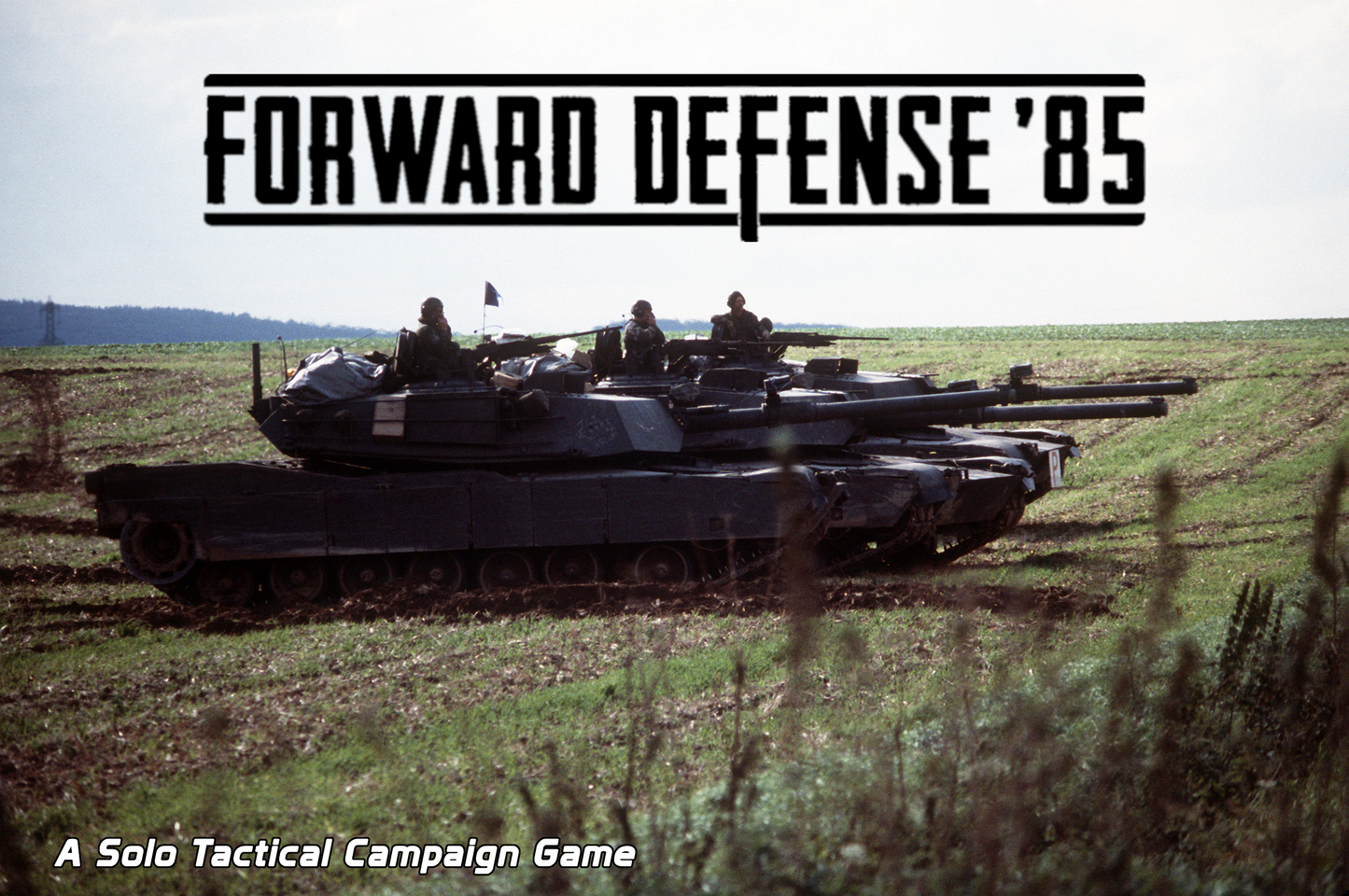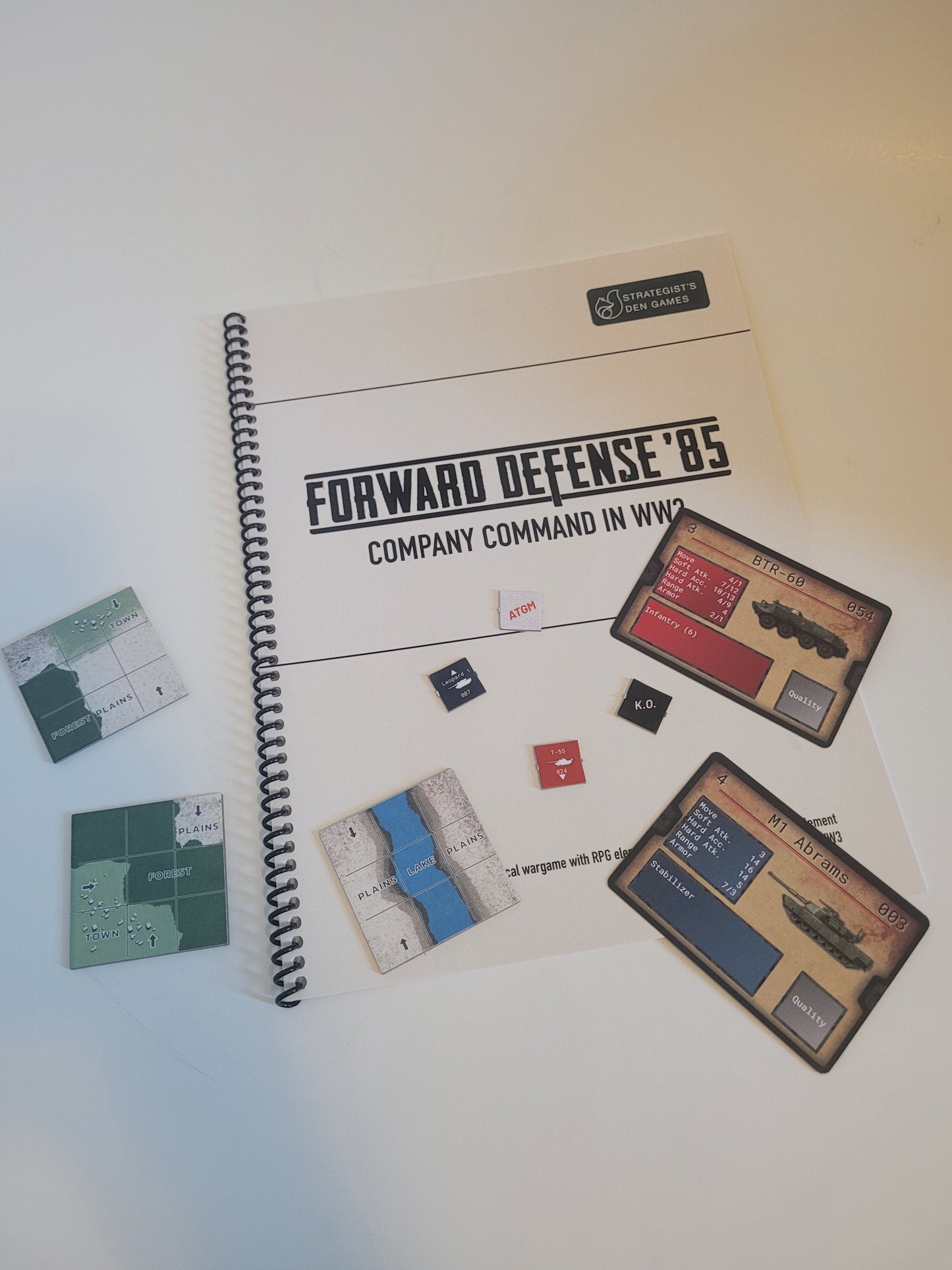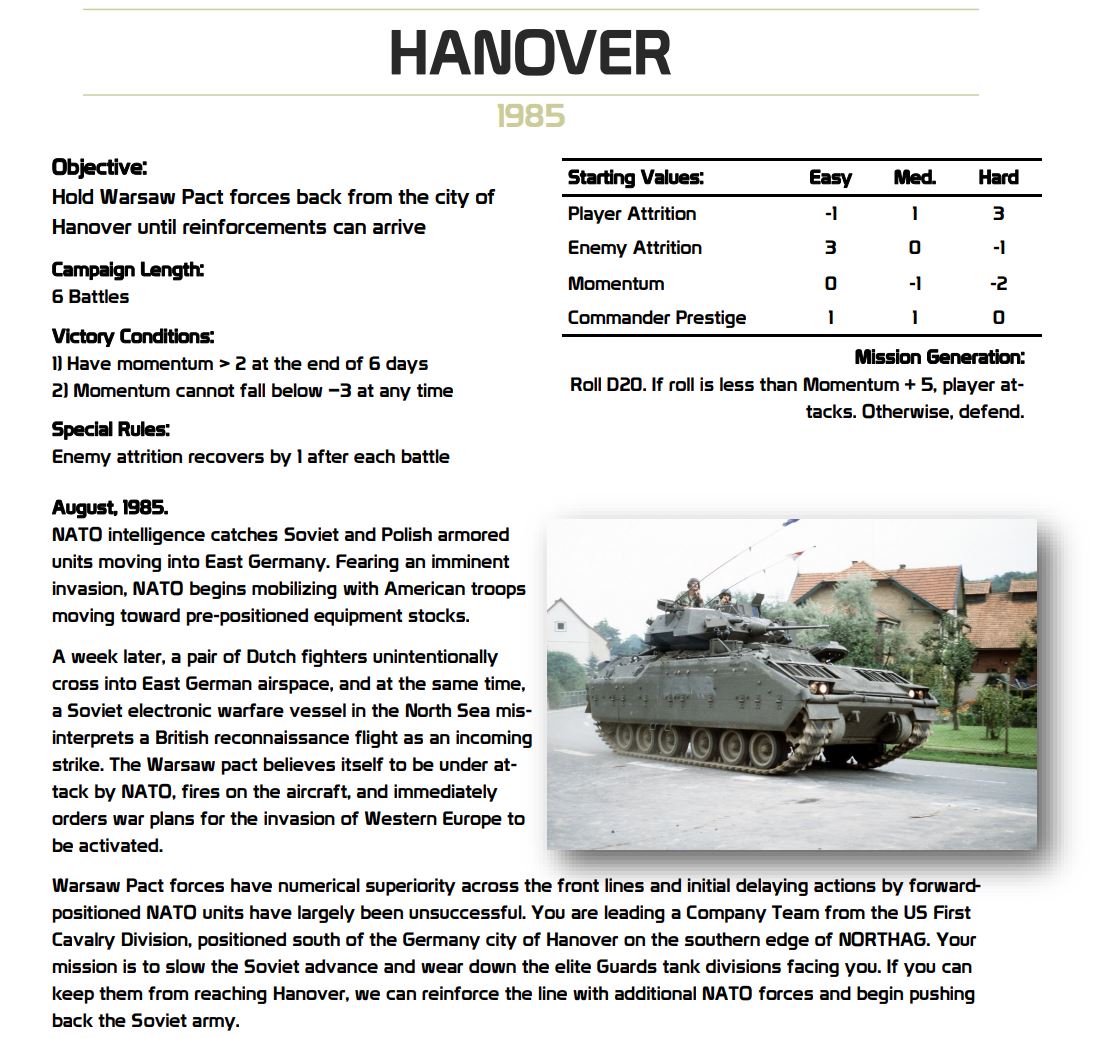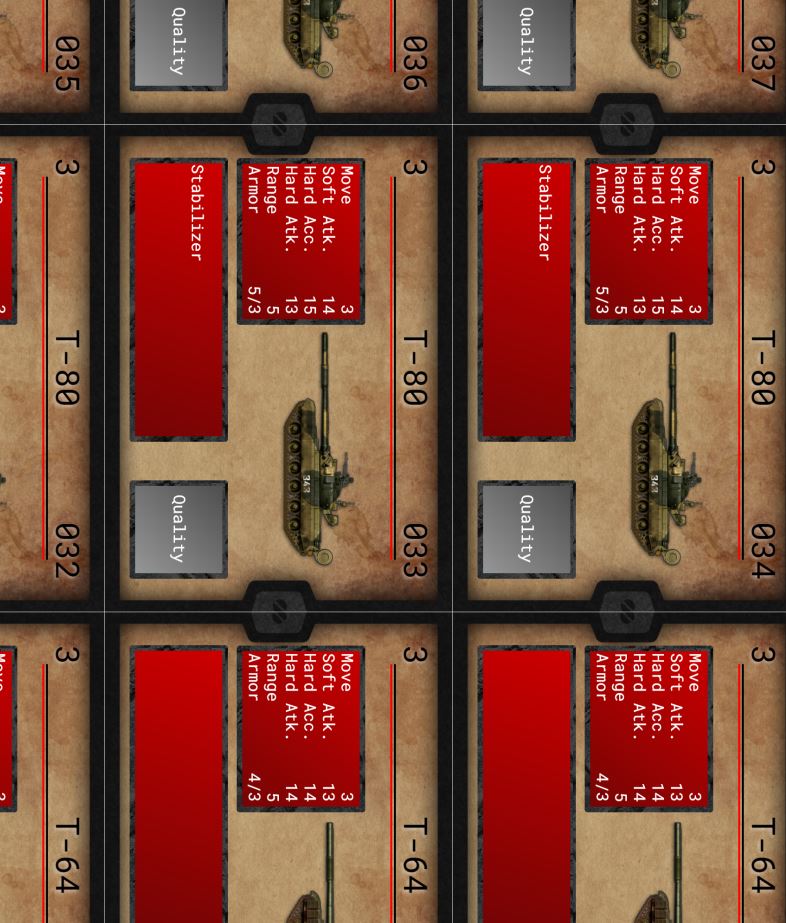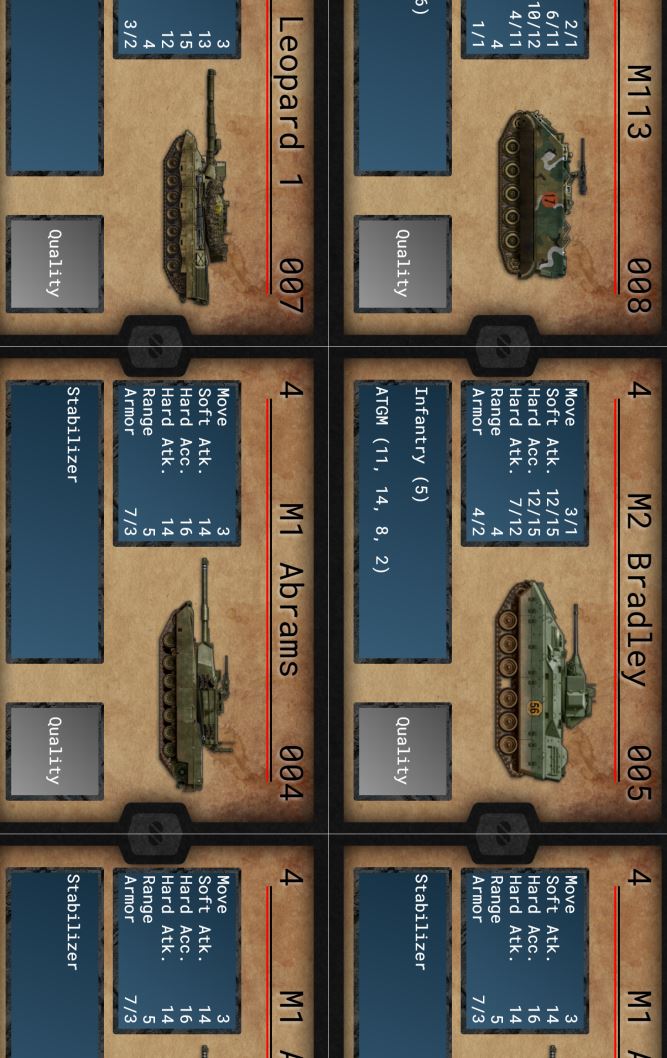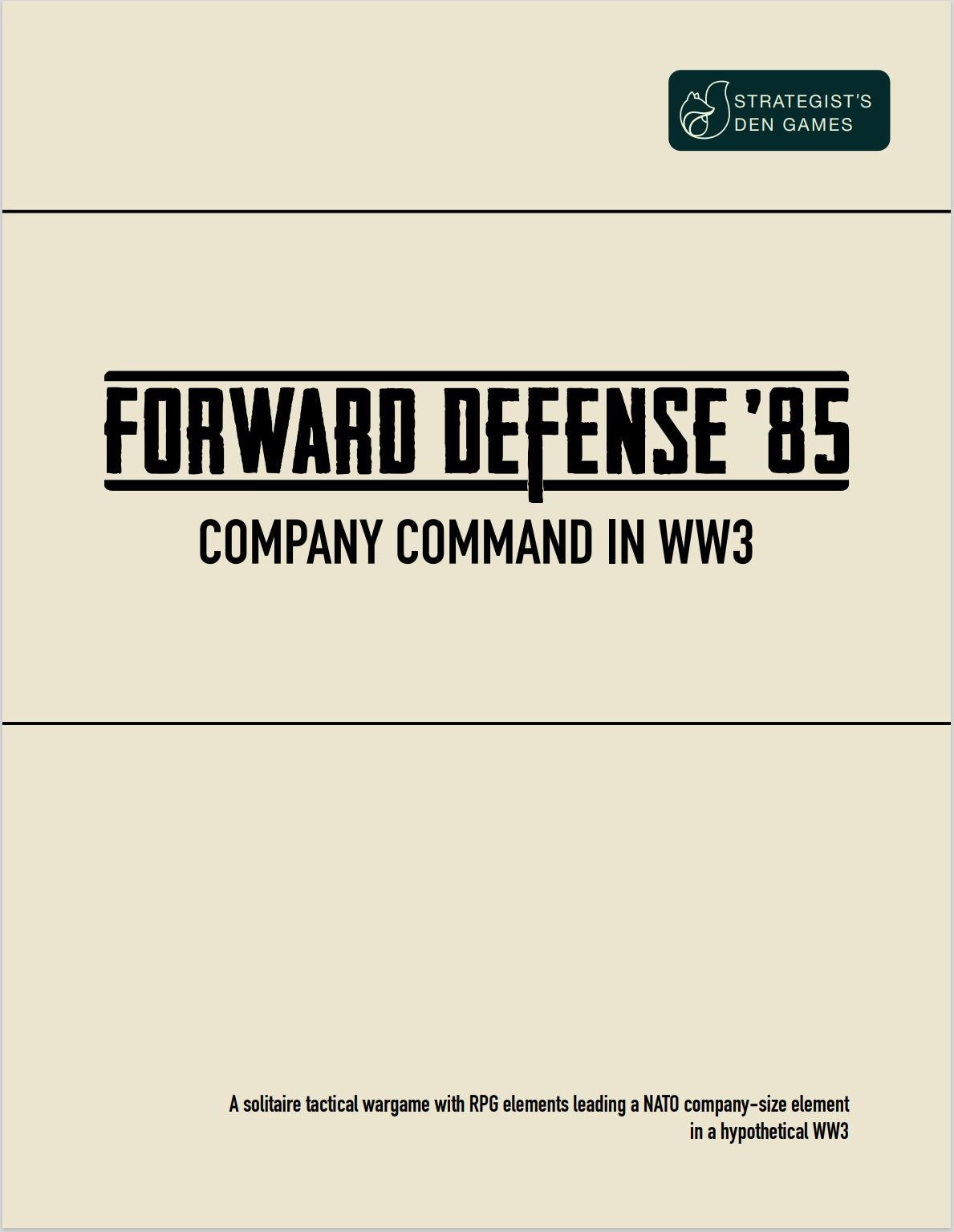Strategist's Den Games
Forward Defense '85 - PnP Version
Forward Defense '85 - PnP Version
Couldn't load pickup availability
Note: This is a print-and-play game for digital delivery. You will receive files to print your own copy of Forward Defense '85.
Forward Defense '85 is a solitaire tactical tabletop wargame where the player leads a company-sized NATO element in a hypothetical, realistic WW3.
The experience of your units, the terrain, your objectives, and the balance of the overall campaign affect each and every procedurally-generated battle in the campaign. Every decision matters and requires you to value your resources: Is it worth holding that town and securing a tactical victory? Or is it wiser to withdraw your best armor platoon to fight another day?
See Forward Defense '85 on BoardGameGeek
Read an interview with the designer on The Players' Aid
Read an interview with the designer on The Boardgames Chronicle
Forward Defense '85 simulates the fast, ultra high-intensity battles that would have been expected in the opening phase of a Cold War gone hot. Game mechanics are built to reflect the AI using actual Soviet doctrine versus a more nimble but dramatically outnumbered NATO player.
A wargame you can actually get on the table
A small footprint game, FD '85 can easily be played on a desk. Setup takes less than 12 minutes (I timed it with a stopwatch) and playing a mission takes about 60 minutes - individual missions in the campaign offer a natural break point, making it easy to fit a complete experience in a small amount of time, or play through as many as you want.
How the Game Works
The conditions for every battle are generated based on tables on the campaign sheet - these are influenced by momentum (winning/losing battles in the campaign) and attrition on either side. Losing units makes it more difficult for the player to get reinforcements, while Soviet unit quality will degrade as second-tier units are brought forward to relieve their battered forces. Based on performance, the player gets supply dice prior to each battle which can be used to call in replacements, get air support, or attach additional platoons from friendly forces. Loses can often be replaced, but the replacements will lack the experience your existing units build through surviving battles. Unit quality (a combination of experience, training, and morale) is a key factor providing bonuses in several different ways.
Battles can place the player on the attack or in a defensive position, aiming to overcome numerically superior Soviet forces. The Soviets will use their mass to attempt to break through your lines, while the player must maneuver carefully to use (generally) superior units and clever tactics to win. Units operate at the platoon level, with losses tracked by each individual vehicle. Combat is D20-based, with attacks rolling to hit, then rolling to destroy, enemy vehicles. Dismounted infantry, following doctrine of the time, operate with their transport vehicles and provide bonuses to them while not suppressed.
Battles resolve quickly, typically taking an hour or less. Despite the depth of tracking campaign progress and multiple individual platoons, progress is tracked on a single side of a sheet of paper for an entire campaign, and takes about five minutes after a battle to record.
Share
